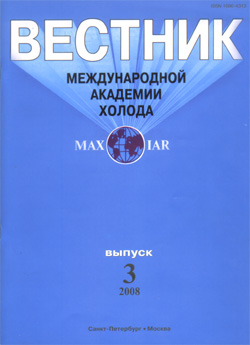
Compensation of neglected interactions while calculating freezing temperature of water-propylene glycol coolant

Annotation
In this paper the formula of water-propylene glycol electrolyte coolant freezing temperature is corrected. If electrolyte concentrations and propylene glycol mass fraction are small the discrepancies between experimental and calculated values of freezing temperatures are not too large. If propylene glycol mass fraction increases these discrepancies increase too and reaches50% when mass fraction is 30 % due to the influence of some unknown factors. One can analyze the nature of the discrepancies and add a compensating coefficient to the formula of freezing temperature. Two compensation methods are suggested: an additive and a multiplicative one. In both casesthe discrepancies areapproximated by second-degree-polynomial in two variables– electrolyte concentration and propylene glycol mass fraction. The residual error is calculated– an average module of calculated correcting coefficient deviation from real remainder value all over the table. Errors for both methods are compared. Multiplicative method is shown to give a better approximation. That results in improved formula.
Keywords
Постоянный URL
Articles in current issue
- The effect of complex supplements on 100% barley malt wort fermentation process
- Using global gene pool of cattle in the formation of raw materials base for dairy industry of Black Earth region
- The prospects for freezing of Jerusalem artichoke (Helianthus tuberosus L.) tubers
- The choice of parameters for vacuum freeze-drying of dry heat-sensitive material with predetermined properties
- Competitiveness of yogurt with selenium in terms of the market for fermented milk products
- Quality of bread with hops
- Training technique in the field of the refrigeration and air conditioning based on the Worldskills standards
- Refrigerator car with nitrogen cold supply system
- Improving of packed absorption gas cleaning systems in life support systems
- Thermal performance of the refrigeration unit in the air conditioning system with the use of organofluorine compounds as refrigerants
- Circulating system of thermostatting for rotary heat exchanger with single phase hydrogen
- Earth’s climate and the transmission of earth’s heat radiation through the atmosphere
- The influence of crystallite size on electrocaloric properties of ferroelectric ceramics
- Cryopreservation of erythrocytes at –40 оС and –80 оС
- Simulation of skin cryotherapy
